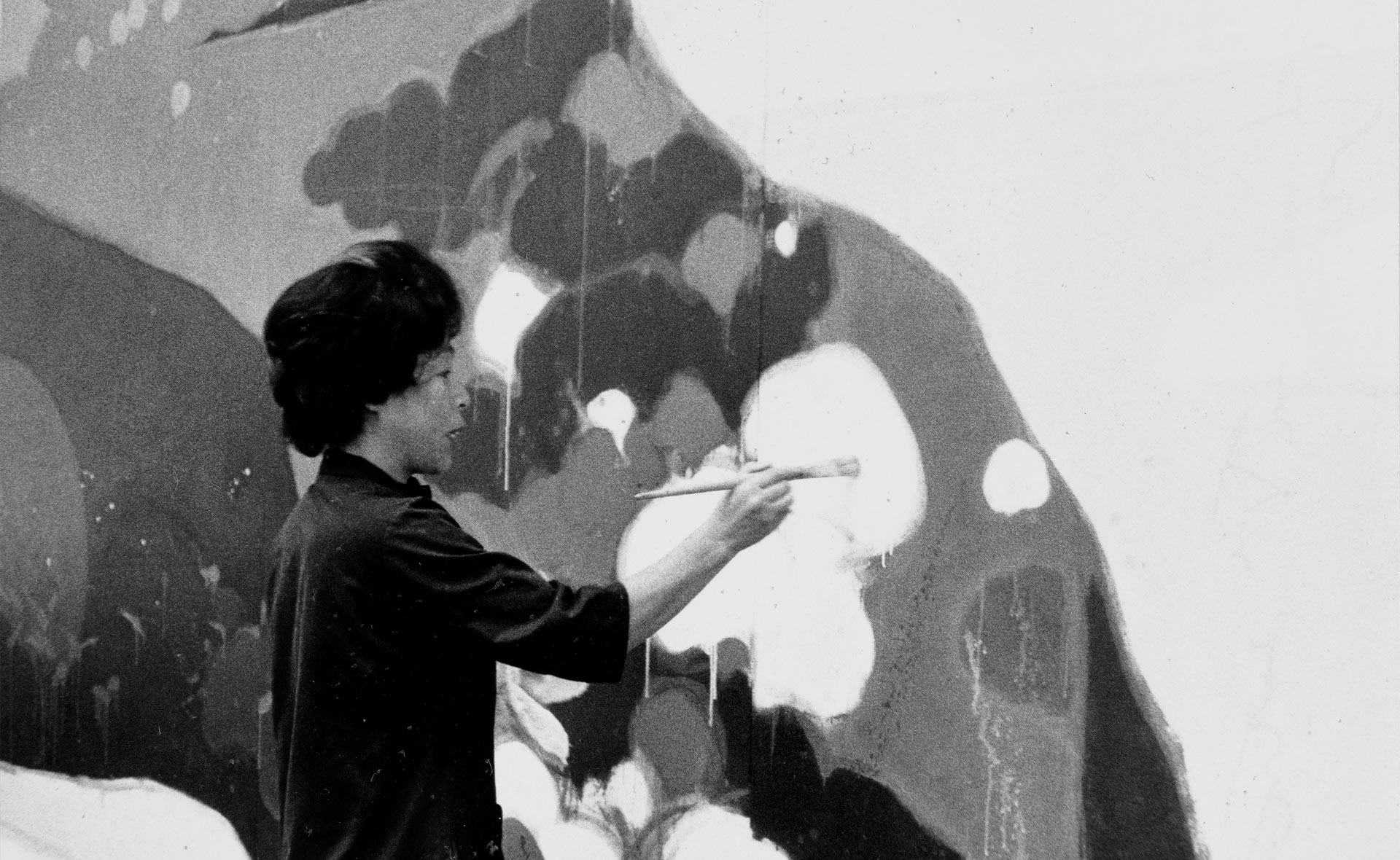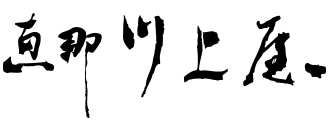Collections
The Collection
Teruko Yokoi used a variety of painting materials, including egg tempera, oil, watercolor, and lithograph, to express a poetic and lyrical worldview inspired by the four seasons in Japan.
Her style varied widely In Japan, her style was impressionistic, in America and France, abstract, and in Switzerland, where she achieved great success as a painter, she developed a style of abstract representation of figurative objects.
She also established her own style by combining Western painting techniques with Eastern traditions and sensibilities, and by using highly saturated and beautiful colors.
-

《Landscape in Tsushima》
1938 or 39
Oil on board
Ms. Yokoi was born in Tsushima City, Aichi Prefecture, and lived in Tsushima until the age of 25, when she moved to Tokyo. This work was painted when she was in her third year of junior high school. According to her, "Tsushima...(omission)...has a townscape that still has some of the atmosphere of the Edo period, and then there are rows of rice paddies with lotus fields in between, which are bright yellow in spring and summer, and then rape blossoms. After that, the rice would turn golden. It was that kind of real countryside...(omitted)".
-

《Untitled》
1957
Oil on canvas
Ms. Yokoi's style of painting at the time he began to draw under the influence of abstract expressionism. After moving from San Francisco to New York in 1955, she moved toward abstract expressionism in a single stroke. The influence of Okada Kenzo, who pursued a unique style of painting based on traditional Japanese aesthetics, color sense, and view of nature, can also be felt in her work.
-

《The Legion of Honor》
1955
Bamboo pen and ink on paper
The Region of Honor is a museum in San Francisco where Ms. Yokoi's first solo exhibition of oil paintings was held in 1955. As one of the nation's foremost halls of Western art, the museum boasts a collection of more than 124,000 pieces of decorative arts, sculptures, and paintings. The fact that her first solo exhibition was held at the museum gave her confidence in her own painting ability, and at the same time, it was a very memorable place for her. She often used a bamboo pen, made of shaved bamboo, for sketching landscapes.
-

《Still life》
1954
Oil on canvas
This work was painted in San Francisco, Ms.Yokoi's first creative base abroad, where she learned a great deal. In the early years of her career, she sometimes painted still lifes under the influence of her Japanese mentor, Takanori Kinoshita, but she stopped doing so after 1955. The number of still-life paintings she produced during her lifetime was small, making them extremely rare.
-

《Ballad of East and West》
1962-68
Oil on canvas
This work, titled "Ballad of East and West," expresses the fusion of East and West, as if Ms. Yokoi, an Oriental, was searching for her own identity in the West. In her search for a unique abstract expression, she established a style of painting with a taste for nature and the four seasons. According to her, "The transition from figurative school to abstract painting was very natural. It was a natural transition. But at the root of these abstract paintings were the natural scenes of Japan, where I lived.”
-

《Deep Autumn II》
1964
Oil on canvas
The technique of intentionally pouring down paint with a paintbrush that contains plenty of paint and the technique of shaking the paintbrush to make spots can be seen to be influenced by the Abstract Expressionism (Action Painting) of the 1950s in New York, USA. This work uses red, the most symbolic color in Ms. Yokoi's work, which has been described as a color painter.
-

《Untitled》
1960s
Ceramic
Signed "照" inside the base and with a brush-drawn leaf-like thick line pattern on the side. This is the ceramic piece Ms. Yokoi produced after taking a ceramics course in Wallis, Switzerland, shortly after moving there. This is the ceramic work she has produced.
-

《Plum festival》
2006
Egg tempera on paper
In her late 50s, Ms.Yokoi adopted "the four seasons" as her theme, transitioning from oil painting to egg tempera for its vibrant colors and resistance to discoloration and deterioration. Through this medium, she sought to express the richness of the four seasons. This piece was exhibited at the "SCHNEE MOND BLUMEN Retrospective von 1941 bis heute" held at the Confeld Gallery in Switzerland in 2009. It also became the cover artwork for the exhibition catalog.
-

《Untitled》
1962/63
Gouache on paper
Ms. Yokoi, who had a deep love for books and was influenced by her father, a calligrapher with a hobby in haiku, had been exposed to various words and characters since childhood, including calligraphy, poetry, tanka, and haiku learned in school. As she expressed, "I wanted to become either a painter expressing colors through art or a poet expressing colors through words," the connection between painting and writing persisted throughout her life, serving as a constant source of inspiration and creativity.
-

《San Francisco, Van Ness Avenue》
1953
Oil on canvas
Inspired by the view from the window of her house while attending the California School of Fine Arts, Ms. Yokoi painted the beautiful sight of the sun setting over the Pacific Ocean. Feeling saddened and downcast as she watched this breathtaking moment alone, a teacher encouraged her, saying, "Teruko, you are a painter. As a painter, you can capture that fleeting moment on canvas and make it eternal. By doing so, you can share that joy with others instead of keeping it to yourself."
-

《Chestnut》
2002
Egg tempera on paper
This artwork depicts the seeds (nuts) wrapped in skin in a representational manner, while the spiky husk is portrayed abstractly. From the 1980s onwards, Ms. Yokoi frequently produced vibrant works themed around the seasons, landscapes, and flowers of nature. The integration of abstract elements into representational expressions can be traced back to her experiences with abstract art during her time in America and France.


